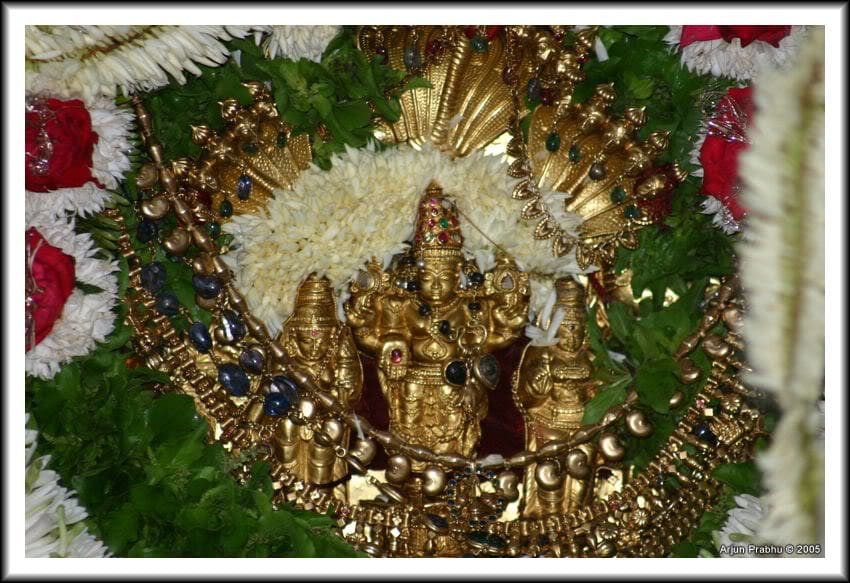
Karkala with its numerous sights never fails to fascinate people. A mixture of nature and history, the cocktail leaves a pleasant after taste.
Its magnificent Ramasamudra Lake flouting its Nelumbiums, black granite outcrops standing tall and dark, the serene smile of Bahubali, Jain basadis galore, blue hillocks on the east all make Karkala a man’s concept of paradise.
It is the Venkatramana Temple, an amalgamation of glory, faith and architecture that strikes the mind and stands tall when Karkala is mentioned. With its hoary past, the temple is the hub of all religious and cultural activities of the Gowda Saraswath Brahmins. A place of reverence and devotion for many. There is hardly an individual in Karkala who has not adored the architecture, worshipped the gods and goddesses and appealed to them to grant their wishes. An aura in the presence of the Almighty always lingers in the garbha-griha. It is one of the biggest of such temples in the district with Lord Venkataramana as the deity.

Photo: Arjun Prabhu
Padu Tirupati
Karkala, to many, is the Padu Tirupati on account of the historic and legendary association with Tirupati in many ways, including that of offering mudupu. This temple used to accept mudupu, offerings collected in the form of cash to Lord Srinivasa of Tirupati. The temple authorities used to turn these over to the Tirupati shrine. But the practice has been discontinued since 1970.
History tells us that the then rulers of Karkala, the Bhairava dynasty constructed the Temple after the Gowda Saraswath Brahmins arrived in Karkala, leaving Goa when the Portugese invaded.
History recalled
Installed on April 25, 1537 the story has an interesting twist. The site for the construction of the temple was said to have been selected in a very orthodox way. A cow and her calf were let off after performing a pooja, and the place where the cow took rest after feeding her calf was selected for the holy shrine. An inscription available in the temple reads that the temple was renovated in 1699.
The main deity of the temple, called ‘Pattada Devaru’ is Srinivasa and the subsidiary ‘Utsava Devaru’ that is the lord taken in a religoius procession, is Venkatramana. It is aid that Karkala was constantly under attack from the Kodavas and Kandahars. Panic stricken villagers fearing that the idols that they so dearly worshipped would be looted, carried the idols with them, in search of a safer place. They are reported to have dropped the idols in a well near Mulky with a view of salvaging them later.
With the attackers gone, the devotees tried retrieving them but could in the process failed to locate one of them. A local person, who found it refused to return it but installed the idol at Mulky. So the presiding deity at the temple at Mulky is still called Sri Venkataramana of Karkala.
The devotees became frustrated after losing one of their idols. It is said that they had a dream directing them to go back to their place where they were told they would receive an idol of Lord Srinvasa from a saint. Their dreams come true when a Brahmin stranger gave them an idol of Srinvasa which he had brought from Tirupati. So the Lord is name Tirupati Chappara Srivasa. Incidentally all the poojas here are performed as in Tirupati. The saint who continued to live in Karkala, breathed his last and was cremated in the outer premises of the temple on the western side and even today his tomb is worshipped on certain occasions.
As the temple gradually developed, the number of devotees visiting the temple increased. The Parivara deities Sri Mukyaprana, Sri Garuda, Sri Laxmidevi and Sri Ganapathi were installed in course of time.
Festival of lights

The Lakshadeepothsava, the festival of lights, known for its festivities is one of the famous festivals of the temple. It is believed that the Gods move eastwards once in a year in the direction of Tirupati. The idols on the way back to the temple adorn the Manna Gopura where the devotees could have a glimpse of the lord from very near. The annual chariot festival rathosava and Chakrotsava is held thrice a year.
Paryayothsava. The right to perform the pooja alternates between two families, the Puraniks and the Joshys. A family of Tantris performs all religious activities in the temple other than the poojas.
The additions
The Veeramaruthi Temple built opposite the main temple on the northern side of the road, is another attraction of the town with its fifteen feet monolithic idol of Lord Hanuman. It is said to have been installed in the 16th century during the Bhairava regime. Fascinated by the size of the statue, Tippu Sultan is believed to have sent enough silver to prepare a full cover for the Hanuman idol. However to later turned out that it was not enough for a cover and only a silver necklace could be made out of it. The silver necklace made then still adorns the idol.
The four pillars erected at the Garuda Mantap of the temple are architectural miracles. Each pillar narrates a different story. Small creatures like honeybees, spiders and butterflies are meticulously carved on the pillar. The movable chains carved out of a single stone are examples for the fineness and dexterity of the work. The brain behind the wonderful carvings is the well-known sculptor Renjala Gopala Shenoy who specially selected the granite from Nellikar, a village near Karkala taluk for the purpose.

Be the first to comment